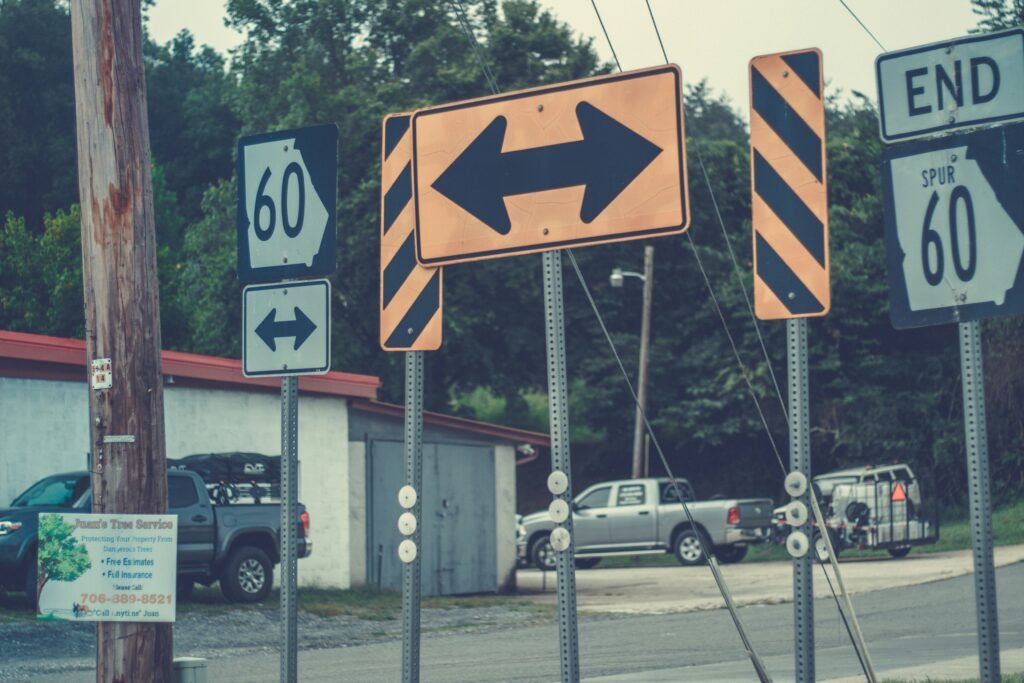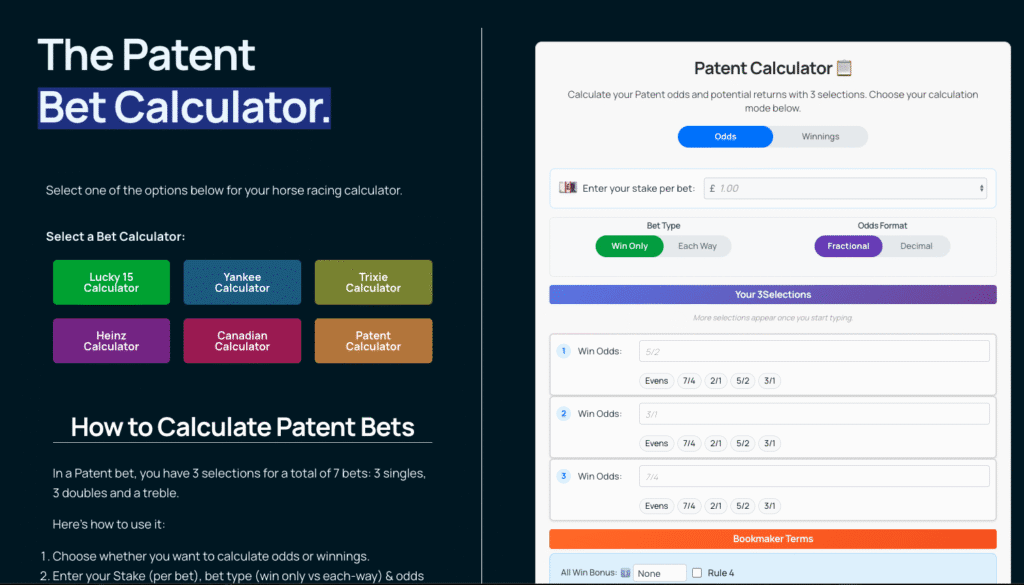Short answer: A Lucky 15 uses four selections and 15 bets with a higher potential payout and cost, while a Patent uses three selections and 7 bets, giving solid coverage at a lower total stake. Choose a Patent for three strong picks and a smaller outlay; choose a Lucky 15 for four picks and bigger upside with more lines.
Lucky 15 vs Patent Bet Similarities

Both are full-cover bets meaning they return something even if only one selection wins. They can both be bet win-only or each way. However, the Patent is like a mini Lucky 15 with a smaller number of selections (7 vs 15).
Lucky 15: A full‑cover multiple on 4 selections made up of 15 bets (4 singles, 6 doubles, 4 trebles, 1 fourfold). You can place it win‑only or each way.
Patent: A full‑cover multiple on 3 selections made up of 7 bets (3 singles, 3 doubles, 1 treble). Also available win‑only or each way.
Both bets pay on singles, so one winner returns something. That’s a key difference from structures like a Yankee (which has no singles).
Quick comparison
| Feature | Lucky 15 | Patent |
|---|---|---|
| Selections | 4 | 3 |
| Total bets (win-only) | 15 (4 singles, 6 doubles, 4 trebles, 1 fourfold) | 7 (3 singles, 3 doubles, 1 treble) |
| Minimum winners for any return | 1 (via singles) | 1 (via singles) |
| Typical stake (at £1 per line) | £15 (or £30 each way) | £7 (or £14 each way) |
| Potential payout ceiling | Higher (more lines and a fourfold) | Lower (fewer lines; no fourfold) |
| Volatility | Moderate to high (more upside/downside) | Lower (smaller stake, smoother returns) |
| Common bonuses | Often: one‑winner consolation; all‑winners % boost | Varies by bookmaker; less commonly boosted |
| Best use case | Four fancies; want coverage + big upside | Three fancies; want coverage at lower cost |
Why choose a Patent over a Lucky 15?
- Lower total outlay: With 7 lines rather than 15, a Patent is easier on the wallet. If you usually bet £1 per line, £7 total (or £14 each way) is accessible for casual punters.
- One winner still pays: Because singles are included, you’re not relying on doubles or trebles. For tight racecards or mixed confidence levels, that safety net is nice to have!
- Ideal for three strong picks: If you have exactly three selections you rate, a Patent is neat and focused. You’re not searching for a fourth just to “fill” a Lucky 15.
When to use a Patent: lower confidence, smaller budgets, or when you have three decent selections you expect to run well without needing to chase a big fourfold.
Why choose a Lucky 15 over a Patent?
- Bigger upside: The extra selection creates four trebles and a fourfold. If you land three or all four, the payout can jump sharply compared with a Patent.
- Promotions: Bookmakers often add one‑winner consolation (e.g., double odds on the single if only one wins) and an all‑winners bonus (a percentage boost if all four win). These can materially improve returns.
- More interest across the card: Four picks mean more race involvement and more possible combinations to land.
When to use a Lucky 15: Big Saturday cards, festivals, or anytime you genuinely like four selections and want a balance between coverage and ambition.
Bet Structures Compared
| Bet Type | Singles | Doubles | Trebles | Fourfold |
|---|---|---|---|---|
| Lucky 15 (4 selections) | 4 | 6 | 4 | 1 |
| Patent (3 selections) | 3 | 3 | 1 | 0 |
Each way Patent vs Lucky 15

Both bets can be placed each way, which doubles the number of lines (and the cost):
- Lucky 15 each way: 30 lines (15 win + 15 place). A £1 each‑way Lucky 15 costs £30 total.
- Patent each way: 14 lines (7 win + 7 place). A £1 each‑way Patent costs £14 total.
Each‑way can make sense when your selections are at bigger odds and have realistic place chances. Place terms vary by race type and field size, so check them before you bet.
Potential payout differences
- With a Patent, two winners usually cover or beat the total stake, and three winners can produce a healthy return. The ceiling is lower because there is no fourfold.
- With a Lucky 15, two winners can often cover the total stake, three winners can be very profitable, and four winners can be excellent, especially with an all‑winners bonus. The trade‑off is the higher initial cost.
If you are mainly aiming to protect your bank and you only have three confident picks, a Patent is sensible. If you want bigger upside and you genuinely like four selections, the Lucky 15 is the natural step up.
Bet examples

- £1 per line Patent = £7 total. Land 2 winners and you usually see a return from 2 singles + 1 double; land all 3 and you collect on every line.
- £1 per line Lucky 15 = £15 total. Land 2 winners and you collect on 2 singles + 1 double; land 3 and you add 3 singles + 3 doubles + 1 treble; land 4 and you sweep all 15 lines.
Remember: prices, Rule 4 deductions, and any bookmaker bonuses will change the final figures. Use a calculator to model outcomes before you place the bet.
Which should you choose?
- Pick a Patent if: you have three strong fancies, want a lower outlay, and value steady coverage over a huge ceiling.
- Pick a Lucky 15 if: you have four solid selections, can afford the higher stake, and want more upside from trebles and the fourfold (plus potential bonuses).
There isn’t a single “best” choice. It’s about matching the bet to your number of selections, your budget, and how much volatility you’re comfortable with.
Final Tips
Before you confirm the bet, check:
- Your stake per line and the true total outlay
- Whether the bookmaker offers one‑winner consolation or all‑winners bonus (more common on Lucky 15s)
- Place terms if going each way
- Any potential Rule 4 impacts on early prices
If you want exact returns for your card, use a dedicated Patent Bet Calculator to simulate outcomes with and without bonuses before you bet.
Tony is the CEO of Lucky 15 Calculator. He has 10+ years of both website and app development / engineering and sports journalism. His two passions collide for Lucky 15 calculator where he builds and updates the world's leading Lucky 15 calculator and leads a team of expert horse racing & igaming journalists.
